Chinese culture : I use easy graphics let you understand the 'Tai Chi' (用最简易的图了解’太极’)
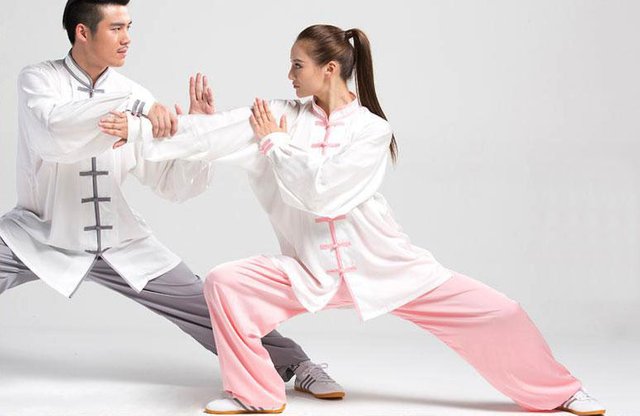
Tai Chi is usually depicted in books by a diagram. Yin ( Women / 陰 ) and Yang ( Man / 陽) continuously do the increment and decrement through endless circulation.
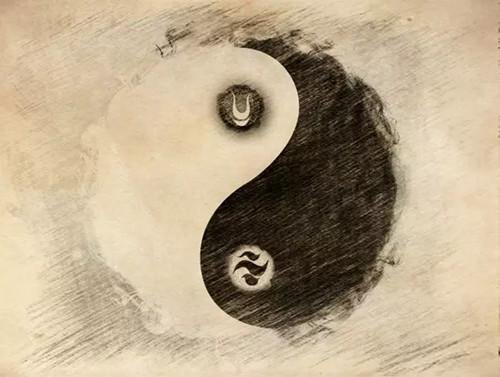
Find the STEEM embedded in Tai-Chi screen
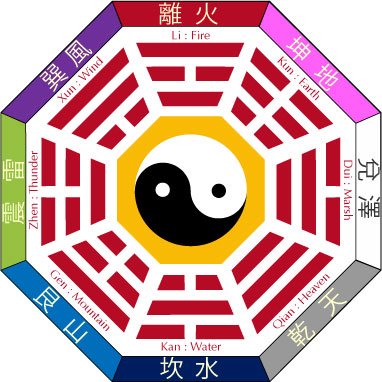
We can see the 'Ba-gua' (八卦) diagram included the Tai-Chi core.
2 fish images in the Tai-Chi Diagram depict the universe still mixed as one body. Yin and Yang continuously do the increment and decrement through endless circulation. This circulation is shown by the black and white images in the Tai-Chi diagram. The amount of black or white color segments in the diagram show the amount of Yin and Yang in exchange. The interlocking of the black and white images in the diagram shows the perpetual balanced exchange of Yin and Yang.
The small white circle in the black segment (fish) indicates the root of Yang in the Yin while the small black circle in the white segment(fish) indicates the root of Yin in Yang. This demonstrates that Yin always contains some Yang and Yang always contains some Yin. This philosophy states that Yin and Yang endlessly circulate but are perpetually in balance. In other words, all changes in the universe are always in balance and endlessly move forward in circular motion. The“I Ching”says that Yin and Yang pushing each other create changes. Hardness and softness grinding each other generate the eight trigrams.This means that the decrement and increment of Tai-Chi Yin Yang and the changes of four forms and eight trigrams are activities that result from finding perpetual balance.
*Yin: we can see it’s night or dark , Yang: we can see it’s sunny day or light
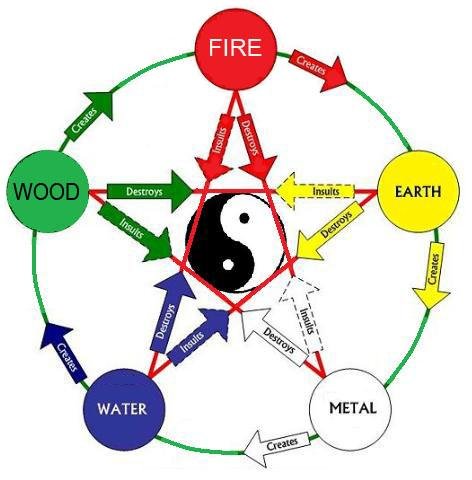
The compatibility Of the elements.
The element we have plays a significant role in the ability we have of getting along with others, especially with those that we love.
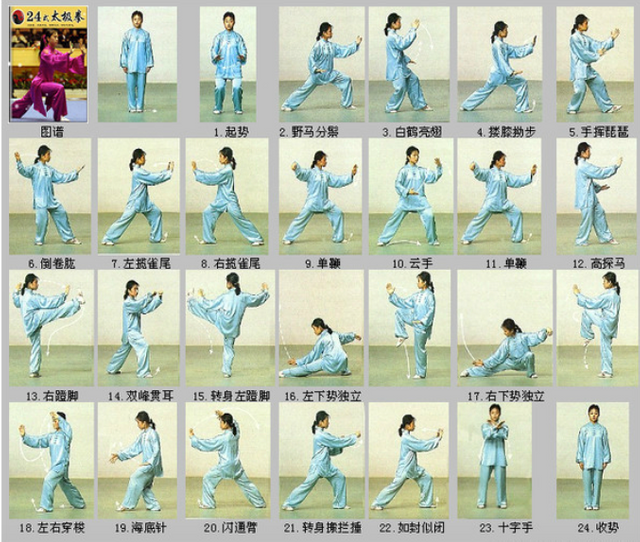
Tai-Chi Gong Fu 24 hands
1. Commencing (Qǐshì, 起势), Preparation, Beginning
2. Part the Wild Horse's Mane (Zuoyou Yémǎ Fēnzōng, 左右野马分鬃), LEFT and RIGHT
3. White Crane Spreads Its Wings (Báihè Lìangchì, 白鹤亮翅), Stork/Crane Cools Its Wings
4.Brush Knee and Step Forward (Zuoyou Lōuxī Àobù, 左右搂膝拗步), Brush Knee and Twist Step, LEFT and RIGHT
5. Playing the Lute (Shǒuhūi Pípā, 手挥琵琶), Strum the Lute, Play Guitar
6. Reverse Reeling Forearm (Zuoyou Dào juǎn gōng, 左右倒卷肱), Step Back and Drive Monkey Away, LEFT and RIGHT
7. Left Grasp Sparrow's Tail (Zuo Lǎn Què Wěi, 左揽雀尾), Grasp the Bird's Tail
8. Right Grasp Sparrow's Tail (You Lǎn què wěi, 右揽雀尾)
9. Single Whip (Dān biān, 单鞭)
10. Wave Hands Like Clouds (Yúnshǒu, 云手), Cloud Hands, Cloud Built Hands, Wave Hands in Clouds
11.Single Whip (Danbian, 单鞭)
12. High Pat on Horse (Gāo tàn mǎ, 高探马), Step Up to Examine Horse
13. Right Heel Kick (Yòu dēng jiǎo, 右蹬脚), Separate Right Foot, Kick with Right Foot
14. Strike to Ears with Both Fists (Shuāng fēng guàn ěr, 双峰贯耳)
15. Turn Body and Left Heel Kick (Zhuǎnshēn zuǒ dēngjiǎo, 转身左蹬脚)
16. Left Lower Body and Stand on One Leg (Zuo Xià shì dúlì, 左下势独立)
Single Whip Squatting Down, Snake Creeps Down,
Golden Rooster Stands on One Leg, Golden Bird Standing Alone
17. Right Lower Body and Bird Stand on One Leg (You Xià shì dúlì, 右下势独立)
18. Shuttle Back and Forth (Yòuzuǒ yùnǚ chuānsuō, 右左玉女穿梭), Fair Lady Works with Shuttles, (Walking Wood), Four Corners, RIGHT and LEFT
19. Needle at Sea Bottom (Hǎidǐ zhēn, 海底针)
20. Fan Through Back (Shǎn tōng bì, 闪通臂), Fan Penetrates Back
21. Turn Body, Deflect, Parry, and Punch (Zhuǎnshēn Bānlánchuí, 转身搬拦捶)
22. Appears Closed (Rúfēng shìbì, 如封似闭), Withdraw and Push, as if Closing a Door
23. Cross Hands (Shízìshǒu, 十字手)
24. Closing (Shōushì, 收势)
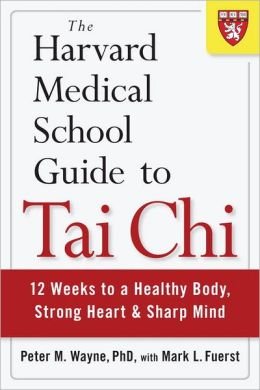
Learn Tai-Chi make your body healthy and more…

Somebody found the pattern
Date: Jul.07-2007 ,Location:United Kingdom,Stantonbury Hill,N.Somerset
Taiji I do but Yang style 108 and not 24.
That Harvard book I have but not read.
Am wondering how you draft this post. The para after the Bagua have incomplete words wrapping. I seem to have the same problem.
I tried a could and recently switch to Kompozer to prepare the HTMLto paste over but that does not seem to be working so well either.
I can't say I read every word of your post, but, in skimming, I saw you posted the Paul Wayne book. NOW I'm excited! I am learning (a lifelong beginner) using Paul Lam's approach. I hope to post more after each class, but currently I'm trying to learn more about this format, as I've only been here a month. I'm going to share it to my page, so I can read it in depth later.
Thanks!